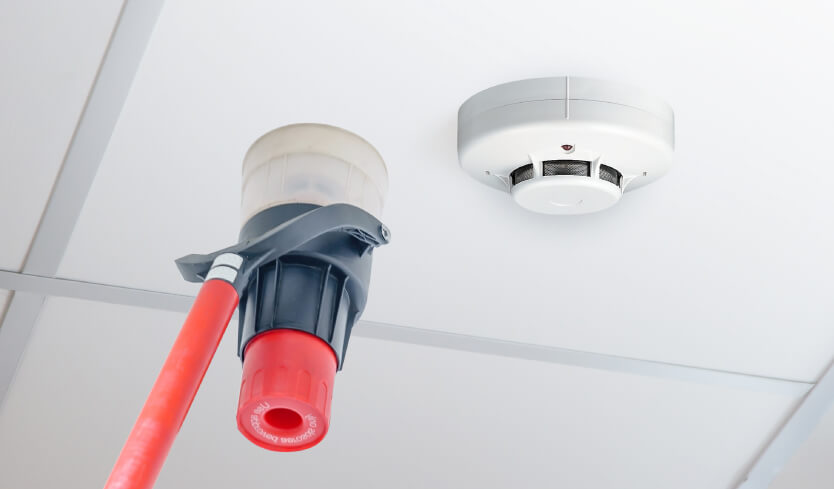Three Tasks to Ensure Proper Operation of Fire Detection and Protection Systems
In India, There are many cases where fire detection and suppression systems are installed, but fail to work when the time comes, leading to fatal accidents.
Case study: Fire due to improper installation of fire detection and protection system.
As it is rightly said, “prevention is better than cure”, it is important for any facility to have the best and safest fire detection and protection systems in place and to maintain them in good working order.
A properly functioning system will warn the people to evacuate before the fire spreads. Therefore, installing the right fire protection system can protect people and property in and around the facility.
In this article, we will discuss the three tasks of maintaining the reliability of fire safety systems throughout their lifecycle: visual inspection, functional/routine testing, and maintenance activities.
Maintenance is further categorized into breakdown maintenance, scheduled maintenance, preventive maintenance, and predictive maintenance.
To prevent fire accidents, please follow the basic tasks
Task 1: Visual inspection of the fire detection and protection system
The first task is visual inspection. The owner of the facility should ensure a visual inspection of the equipment like observing changes in physical interruptions, equipment adjustment, physical damage, level of cleanliness. The problems that the control panel automatically cannot indicate through electrical monitoring must be checked beforehand. The minimum standards for periodic visual inspection of these fire alarms can be found in Table 14.3.1 Visual Inspection Frequencies of the National Fire Alarm and Signalling Code (NFPA 72).
Task 2: Periodic Testing of Fire Detection and Protection Systems
The next task is periodic testing. The purpose of the test is to verify the functionality of the fire protection system. Testing is done to ensure that each component of the system can be operated and performed as required at the time of real emergency. The basic standards for periodic testing of such fire alarms can be found in Table 14.4.5 Testing Frequencies and Table 14.4.2.2 Test Methods of the National Fire Alarm and Signalling Code (NFPA 72).
Task 3: Maintenance of the fire detection and protection system
The last task is maintenance. Maintenance is a task that is necessary to keep the fire system operating efficiently.
Consistency is important in these three tasks.
There are different systems of equipment that require regular visual inspections, periodic testing, and maintenance.
For example, fire alarm and detection systems.
Fire alarms are warning systems that alert the entire facility to the possibility of a fire. Early alarms allow everyone to prepare in advance and take quick safety measures while waiting for the fire department to assist. Although fire alarms are required to be installed in commercial buildings, less emphasis is placed on the installation of the systems.
Automatic fire suppression systems are installed directly or indirectly in a way that they are activated within seconds of smoke or fire, and do not require human intervention. Common examples are fire suppression systems using inert gas, flame tube systems, hydrants and sprinkler systems, which extinguish fires at individual points when heat from the fire is detected, and can be operated manually, but not all at once. They are used to deal with small amounts of fire and prevent it from spreading.
We understand the importance of Nohmi Bosai’s (replacement) maintenance of the equipment uptime rate of Fat%.
At Nohmi Bosai, we not only provide and install fire alarms, fire detectors, gas fire extinguishing systems, water fire extinguishing systems, and fire extinguishers, but we also service and maintain them.
With over 100 years of experience, Nohmi Bosai is a pioneer in the firefighting industry and has an excellent team of firefighting experts with the No.1 market share in Japan, which enables us to provide all kinds of maintenance services including breakdown, routine, preventive and predictive maintenance.
We understand the importance of fire safety and treat it as a top priority. There is no point in installing fire safety equipment if it is not regularly inspected to ensure that it is always in good condition and fit for the purpose and use for which it is intended. To learn more about our service and maintenance options, please contact our professional team.
Our team is available to assist and provide service to your critical requirements.
